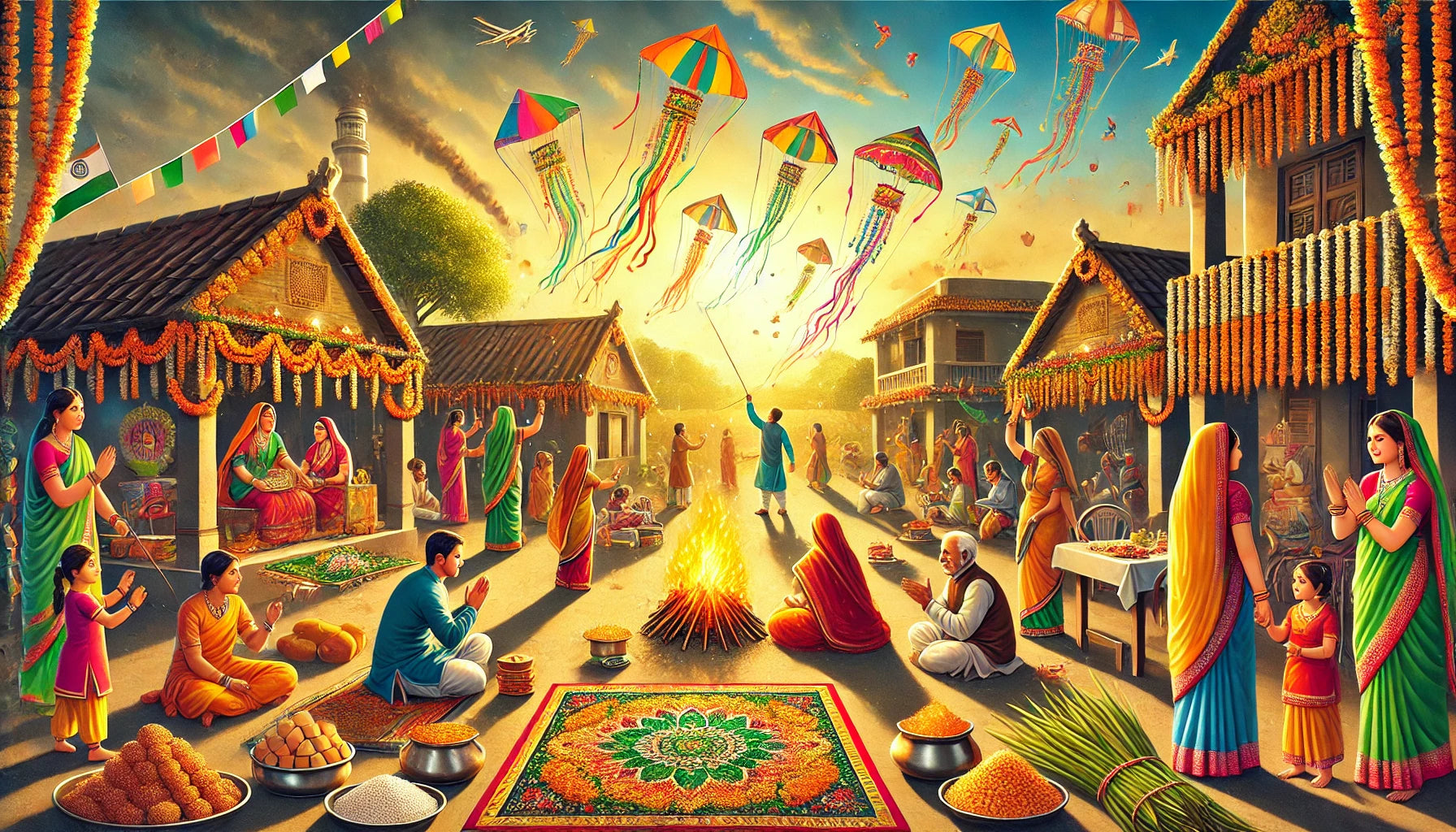The Role of Color in Makar Sankranti Rituals and Celebrations Across India

Makar Sankranti, one of India’s most cherished festivals, signifies the Sun's transition into Capricorn (Makara Rashi), marking the end of the winter solstice and the onset of longer days. This festival is celebrated with immense joy and cultural fervor, bringing communities together to honor nature, traditions, and vibrant colors. From attire to decorations, colors play a central role in enhancing the spirit of this festival. Let’s dive into the significance of Makar Sankranti, its diverse regional celebrations, and how colors make it truly spectacular.
Why Do We Celebrate Makar Sankranti?
Astronomical Importance
-
Makar Sankranti marks the Sun’s movement into Capricorn, symbolizing the beginning of Uttarayana—a six-month auspicious solar transition in the northern hemisphere.
-
It signifies the end of harsh winters and the promise of brighter, warmer days.
Agricultural Significance
-
The festival is a time for farmers to thank nature for bountiful harvests. It marks the end of the Rabi crop season and the beginning of the next agricultural cycle.
Mythological Connections
-
According to Hindu mythology, Bhishma Pitamah chose this day to attain moksha (liberation), considering it highly auspicious.
-
The festival also highlights the reconciliation of Surya (the Sun God) with his son Shani.
Unique Traditions and Fun Facts About Makar Sankranti
-
Solar Calendar Festival: Unlike most Indian festivals, which follow the lunar calendar, Makar Sankranti is based on the solar cycle, ensuring it falls around January 14th each year.
-
Holy Dips: Millions take holy dips in sacred rivers like the Ganga, Yamuna, and Godavari to cleanse their sins.
-
Kite Festival: In Gujarat and Rajasthan, colorful kites fill the skies, symbolizing joy and freedom.
-
Black Sarees in Maharashtra: Women wear black sarees—a unique tradition in Indian festivals—to absorb warmth during winter.
Regional Celebrations Across India
Makar Sankranti showcases India’s cultural diversity, with unique rituals in every region:
North India: Lohri
-
In Punjab and Haryana, Lohri marks the harvest season with bonfires, folk dances, and songs.
-
Women wear vibrant salwar suits paired with phulkari dupattas, adding color to the festivities.
South India: Pongal
-
Tamil Nadu celebrates Pongal, a four-day festival honoring nature, cattle, and harvest.
-
Women often wear bright yellow sarees, symbolizing energy, prosperity, and joy.
East India: Poush Parbon
-
In Bengal, Poush Parbon is celebrated with traditional sweets like pithe and payesh.
-
Attire includes white sarees with red borders, representing purity and auspiciousness.
West India: Kite Festival and Haldi-Kumkum
-
Gujarat and Rajasthan are renowned for their grand kite festivals.
-
In Maharashtra, women wear black sarees during Haldi-Kumkum ceremonies, combining tradition with practicality.
Central India: Tribal Traditions
-
States like Chhattisgarh and Madhya Pradesh celebrate with folk music and earthy tones in outfits.
-
Traditional attire reflects regional craftsmanship and natural dyes.
The Role of Color in Makar Sankranti Fashion
Colors are essential to Makar Sankranti, infusing life into rituals, decorations, and festive attire. Each hue carries deep cultural and spiritual significance:
Key Colors and Their Symbolism
-
Yellow: Representing warmth, energy, and prosperity, yellow sarees are a popular choice for women during the festival.
-
Black: Predominantly worn in Maharashtra, black sarees are both practical for winter and culturally significant.
-
Red and Orange: These colors symbolize positivity and auspiciousness, often seen in decorations and traditional attire.
Festive Sarees and Styling Tips
-
Trending Sarees: Silk sarees, handloom designs, and cotton sarees with intricate embroidery are in high demand.
-
Styling Tips:
-
Pair a yellow saree with gold jewelry for a radiant festive look. Shop yellow sarees here.
-
Combine a black saree with bold accessories to create a striking appearance. Find black sarees in our collection.
-
-
Accessories: Add traditional jewelry, colorful bangles, and floral hair adornments to complete your outfit. Discover must-have saree accessories to elevate your look.
Modern Trends in Celebrating Makar Sankranti
Fusion Wear for Millennials
-
Younger generations blend traditional sarees with contemporary blouses and chic accessories, creating unique fusion outfits.
Sustainability in Fashion
-
Eco-friendly fabrics and natural dyes are gaining popularity, aligning with modern values of sustainability.
Social Media Influence
-
Platforms like Instagram and Pinterest spotlight festive trends, inspiring women worldwide to experiment with their attire.
Colors in Rituals and Decorations
-
Rangoli Designs: Vibrant rangolis adorn homes, symbolizing happiness and prosperity.
-
Floral Arrangements: Marigold garlands, turmeric (yellow), and kumkum (red) enhance the spiritual ambiance of rituals.
-
Holy Offerings: Sacred items reflect gratitude and spirituality, incorporating symbolic colors.
Celebrate Makar Sankranti with Trend In Need
This Makar Sankranti, embrace the joy of colors and traditions. Whether it’s a radiant yellow saree or an elegant black saree, find your perfect festive outfit at Trend In Need. Explore our exclusive saree collection and make your celebrations truly special!